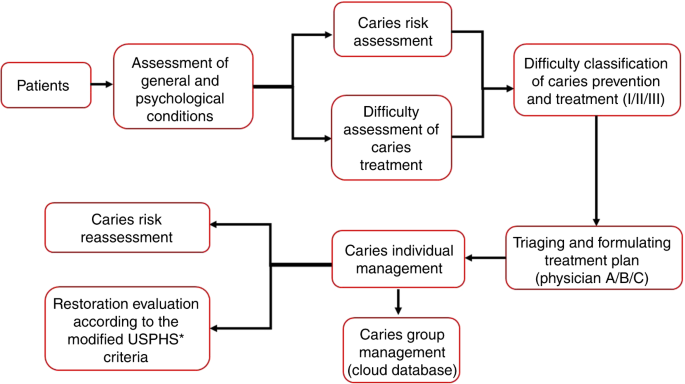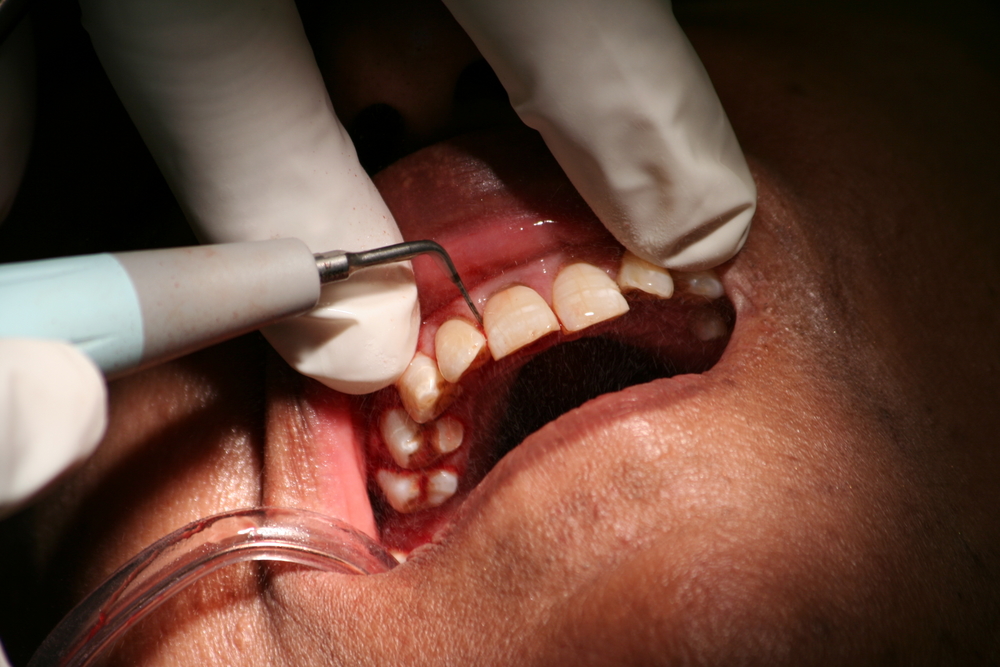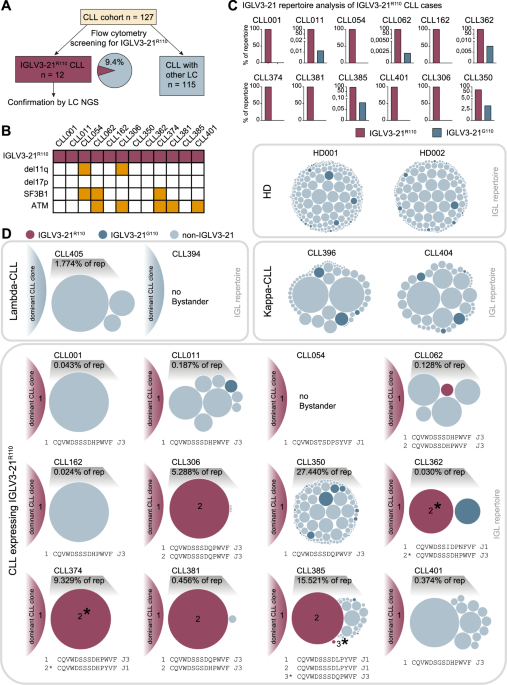|
ΩτοΡινοΛαρυγγολόγος Medicine by Alexandros G. Sfakianakis,Anapafseos 5 Agios Nikolaos 72100 Crete Greece,00302841026182,00306932607174,
Translate
Ετικέτες
Πέμπτη 31 Μαρτίου 2022
At least 3 years of self-responsibility for periodontal care after 2 years of supportive periodontal therapy
A Mass in the Infratemporal Fossa
|
Key Issues in Use of Prophylactic Steroids to Prevent Hypocalcemia and Voice Dysfunction After Thyroidectomy—Reply
|
Evaluation of digital construction, production and intraoral position accuracy of novel 3D CAD/CAM titanium retainers
|
Expert consensus on dental caries management
|
Τετάρτη 30 Μαρτίου 2022
Air polishing or hand and/or power-driven instruments in supportive periodontal therapy
|
Subclonal heterogeneity sheds light on the transformation trajectory in IGLV3-21R110 chronic lymphocytic leukemia
|
The implicated clinical factors for outcomes in 304 patients with salivary duct carcinoma: Multi‐institutional retrospective analysis in Japan
|
Comparison of stress distribution between zirconia/alloy endocrown and CAD/CAM multi-piece zirconia post-crown: three-dimensional finite element analysis
|
From a Slave to a Surgeon: David Kearney McDonogh, the First Black Otolaryngologist
|
Subclonal heterogeneity sheds light on the transformation trajectory in IGLV3-21R110 chronic lymphocytic leukemia
|
Comparison of the Osteogenic Effectiveness of an Autogenous Demineralized Dentin Matrix and Bio-Oss® in Bone Augmentation: A Systematic Review and Meta-analysis
|
Αρχειοθήκη ιστολογίου
-
►
2023
(278)
- ► Φεβρουαρίου (139)
- ► Ιανουαρίου (139)
-
▼
2022
(1962)
- ► Δεκεμβρίου (107)
- ► Σεπτεμβρίου (158)
-
▼
Μαρτίου
(196)
- At least 3 years of self-responsibility for period...
- A Mass in the Infratemporal Fossa
- Key Issues in Use of Prophylactic Steroids to Prev...
- Evaluation of digital construction, production and...
- Expert consensus on dental caries management
- Air polishing or hand and/or power-driven instrume...
- Subclonal heterogeneity sheds light on the transfo...
- The implicated clinical factors for outcomes in 30...
- Comparison of stress distribution between zirconia...
- From a Slave to a Surgeon: David Kearney McDonogh,...
- Subclonal heterogeneity sheds light on the transfo...
- Comparison of the Osteogenic Effectiveness of an A...
- Advances in Surgical Treatment of Rhinitis
- Key Points on Functional Rhinoplasty Patient Evalu...
- Anatomical variations in the relationship between ...
- The efficacy of Kinesio taping on lymphedema follo...
- Migration of a Fish Bone From the Esophagus to the...
- Design and Experimental Validation of a Master Man...
- A comparison between sniffing and blowing for olfa...
- Acromegaly
- Giant Pituitary Adenoma – Special Considerations
- Bladder Cancer Need Not Always Require Radical Cys...
- Surgical treatment trends and identification of pr...
- Improvement of performance and function in respira...
- The contralateral progression in a cohort of Chine...
- Stereotactic radiosurgery for the treatment of hyp...
- How I do it: management of M2 tear injury caused b...
- miRNA-guided reprogramming of glucose and glutamin...
- Perigraft seroma after total aortic arch replaceme...
- New ORL Abstracts
- Ganoderic acid A ameliorates non-alcoholic streato...
- Shp2 suppresses fat accumulation in white adipose ...
- Dural Entry Point of the Vertebral Artery: An Over...
- 3Effect of FFP2+3 masks on voice range profile mea...
- Variations in the anterior thoracic wall with ster...
- The efficacy of Kinesio taping on lymphedema follo...
- New ENT Abstracts
- Ultraviolet light induces HERV expression to activ...
- Using the external auditory canal skin graft of th...
- The Auditory Processing Domains Questionnaire (APD...
- Giving Children with Deafness a Cape: Amplifying D...
- Preclinical study of Shen Qi Li Xin formula in imp...
- Liposarcoma subtype recurrence and survival: A UK ...
- Columellar strut grafts versus septal extension gr...
- H2O2 Concentration in Exhaled Breath Condensate In...
- The application of polyethylene glycol‐coated coll...
- MicroRNA-302 inhibits cell migration and invasion ...
- miR-150-5p inhibits osteogenic differentiation of ...
- Anagliptin promotes apoptosis in mouse colon carci...
- Radiologic–pathologic correlation of major versus ...
- Effectiveness of gabapentin in reducing opioid req...
- Second primary malignancies induced by radioactive...
- Neue Therapieansätze für Speicheldrüsenmalignome
- Endoscopic dacryocystorhinostomy for refractory na...
- Pelvic Pain after italian coffee consumption : Isc...
- ROBOTIC REPAIR OF ATRIAL SEPTAL DEFECT WITH PARTIA...
- Comparison of Video Head Impulse Test Findings in ...
- Bionic hearing in auditory neuropathy spectrum dis...
- Pinna injuries management at tertiary care center
- Otogenic Cerebral Venous Sinus Thrombosis: A Case ...
- Injection laryngoplasty during transoral laser mic...
- Evolution of midface microvascular reconstruction:...
- The effects of Cricothyroid Visor Maneuver (CVM) t...
- Feasibility of Mobile and Sensor Technology for Re...
- Common exacerbation-prone phenotypes across asthma...
- Hyperexcitability in adult mice with severe defici...
- Laboratory and imaging findings of necrotizing oti...
- How I do it: endonasal transcribriform approach fo...
- Anatomic evaluation of the triceps tendon insertio...
- Radiological score of computed tomography scans pr...
- Impact of Stress and Trait Anxiety on the Sensory ...
- Immunophenotypic characteristics of T lineage acut...
- Rodlet cells in kidney of goldfish (Carassius aura...
- Extensor indicis proprius transfer for the extenso...
- The Relationship Between Pitch Discrimination and ...
- BMI as a risk factor for the development of chroni...
- Molecular diagnosis and targeted treatment of adva...
- The effects of Cricothyroid Visor Maneuver (CVM) t...
- Voice Symptoms and Wellbeing in School Teachers in...
- Active Surveillance Versus Thyroid Surgery for Dif...
- Acute anterior thigh compartment syndrome in Premi...
- Introducing Zirconium Organic Gels for Efficient R...
- Voice Handicap Index Changes After Microflap Surge...
- Nipple delay prior to nipple-sparing mastectomy: t...
- Sulopenem: An Intravenous and Oral Penem for the T...
- Propensity Score Analysis of Outcomes Following La...
- Pancreatico-Jejunostomy On Isolated Loop After Pan...
- Pregnancy, Fetal, and Infant Outcomes Following Ma...
- MCM-41-supported double metal cyanide nanocomposit...
- Th17 cells and their related cytokines: vital play...
- Sugemalimab: First Approval
- Deep Learning Forecasts the Occurrence of Sleep Ap...
- Synthetic fused sRNA for the simultaneous repressi...
- Acute cardiac autonomic and haemodynamic responses...
- Enhancement of radiation response of breast cancer...
- Gastric duplication cyst: a challenging EUS differ...
- Real-time eye state recognition using dual convolu...
- Colocalization of Coronary Plaque with Wall Shear ...
- Laser‐Assisted Sialolithotripsy: A Correlation of ...
- Coblation intracapsular tonsillectomy: a cohort st...
- ► Φεβρουαρίου (165)
- ► Ιανουαρίου (163)
-
►
2021
(3614)
- ► Δεκεμβρίου (152)
- ► Σεπτεμβρίου (271)
- ► Φεβρουαρίου (64)
- ► Ιανουαρίου (357)
-
►
2020
(3279)
- ► Δεκεμβρίου (396)
- ► Σεπτεμβρίου (157)
- ► Φεβρουαρίου (382)
- ► Ιανουαρίου (84)
-
►
2019
(11718)
- ► Δεκεμβρίου (265)
- ► Σεπτεμβρίου (545)
- ► Φεβρουαρίου (1143)
- ► Ιανουαρίου (744)
-
►
2017
(2)
- ► Φεβρουαρίου (1)
- ► Ιανουαρίου (1)







